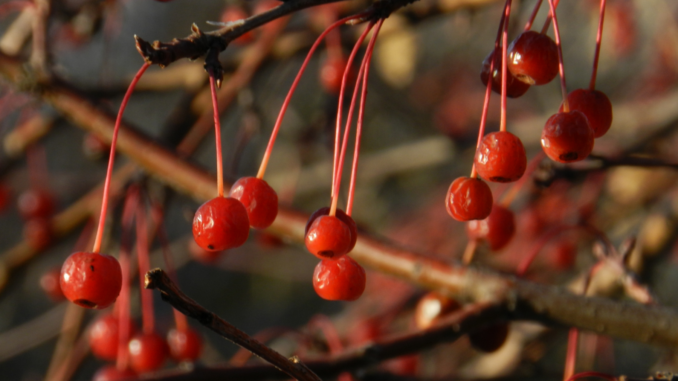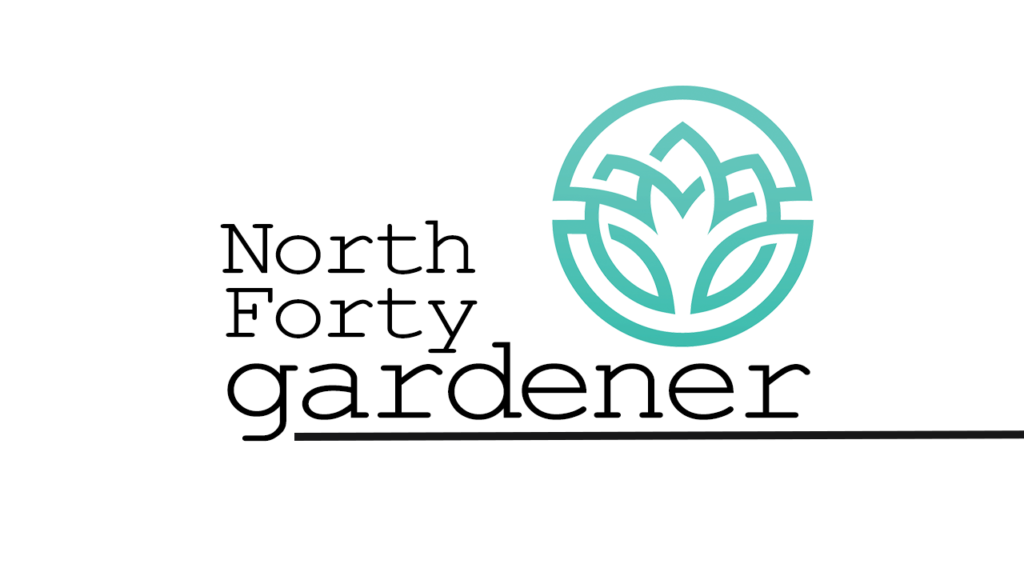

by Bryan Fischer, Horticulturist, Gardens on Spring Creek
A childhood friend of mine once told me about a bird that flew into her window repeatedly each morning, shortly before her alarm was set to go off. A superbly irritating way to start the day, this ballistic behavior seemed to be seasonal and coincided with the bird-eating berries from a nearby shrub in late winter or early spring. I found the situation hilarious! I suspected the berries had fermented a bit; could this be the wake of chaos left behind a birdie bender? Regardless, a flock of waxwings gobbling up crabapples in my neighborhood recently reminded me of the story and got me thinking.
Winter can be a tough time of year for birds. With fewer insects available and little active vegetation, those that do not migrate must scrounge around for what food remains. Bird feeders can help bridge this lean time of year but can also contribute to disease spread among birds and can be messy and expensive. A cleaner option (that attracts far fewer squirrels) is to plant with birds in mind.
Gardens with a diversity of types of bird food (seeds, berries and more) can provide year-long food sources for birds, and a serene outdoor space for you, with fewer of the drawbacks of feeders.
If a plant produces berries, particularly if it is regionally native, it will likely be very attractive to birds. Ideally, these berries are small enough for birds to eat in a single bite and persistent, meaning they hang onto the plant into winter when birds are searching for them. Personally, I look to crabapples (Malus), hawthorn (Crataegus), sumac (Rhus), serviceberry (Amelanchier), chokeberries (Aronia spp.), grape hollies (Mahonia repens and others) and Colorado barberry (Berberis fendleri). Desert olive (Forestiera), can be a great addition as well, but be sure to shop when plants are in fruit; plants are either male or female (only females bear fruit), and females must be pollinated by a male to set fruit. Because birds do pass seeds and are very mobile, I avoid planting species that could be aggressive or adventive in our area, like cotoneaster (Cotoneaster) and privets (Ligustrum).
A plethora of herbaceous plants appeals to birds in winter. Those with many or large seeds, sturdy enough to provide a good perch while feeding tend to be well-liked. Look to natives in the aster family, like sunflowers (Helianthus), coneflowers (Echinacea, Rudbeckia, and Ratibida), asters (Symphyotrichum), Gaillardia, Coreopsis, and Liatris, and native grasses (like Panicum), bee balm (Monarda), anise hyssop (Agastache foeniculum) and mountain mints (Pycnanthemum).
Not only do the above-mentioned plants all provide seasonal interest but they are well suited to our region’s gardens, and most tolerate drought. In the interest of your well-being as much as theirs, just keep them away from your bedroom windows.
Support Northern Colorado Journalism
Show your support for North Forty News by helping us produce more content. It's a kind and simple gesture that will help us continue to bring more content to you.
BONUS - Donors get a link in their receipt to sign up for our once-per-week instant text messaging alert. Get your e-copy of North Forty News the moment it is released!
Click to Donate
